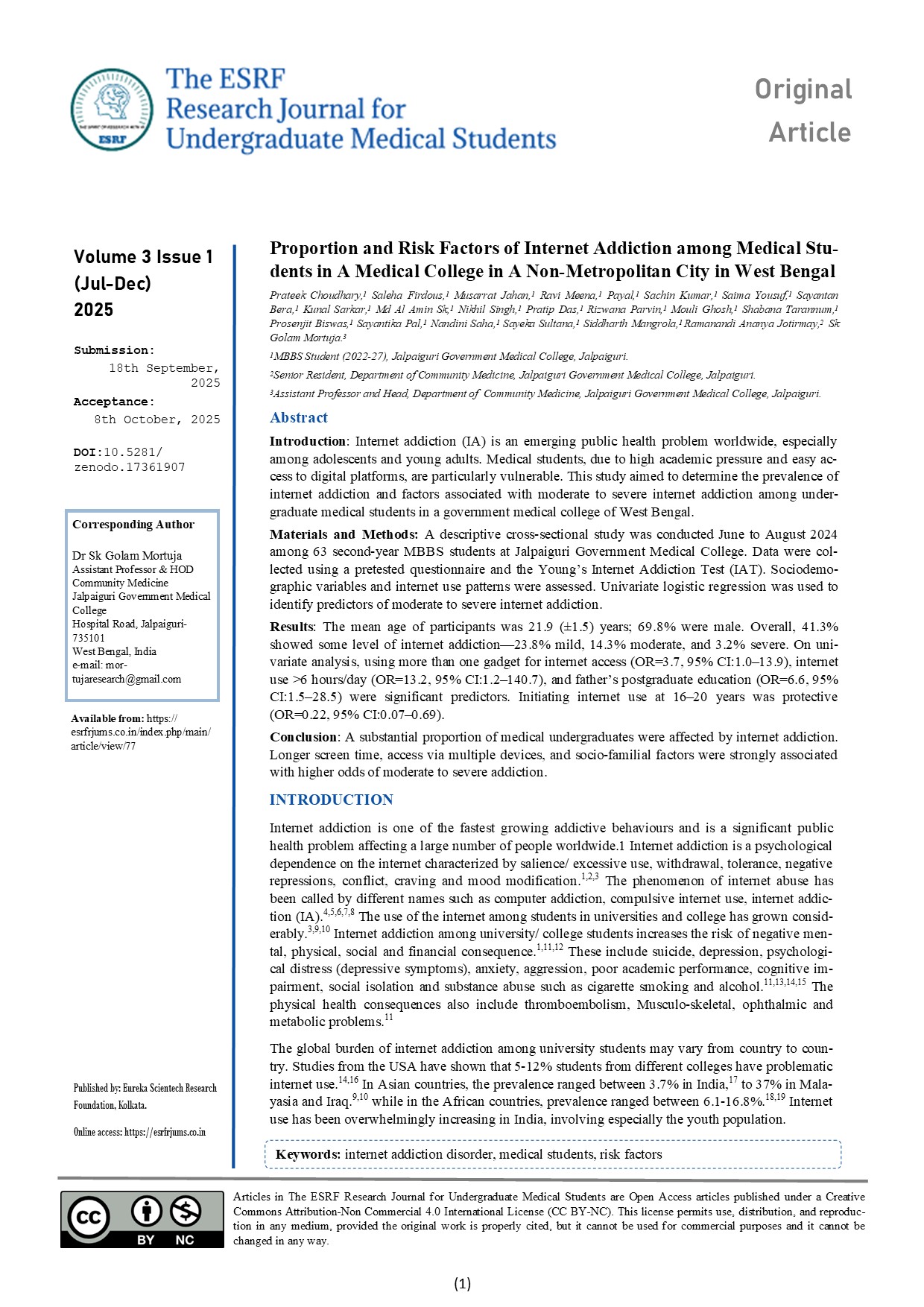Proportion and Risk Factors of Internet Addiction among Medical Students in A Medical College in A Non-Metropolitan City in West Bengal
Main Article Content
Abstract
Introduction: Internet addiction (IA) is an emerging public health problem worldwide, especially among adolescents and young adults. Medical students, due to high academic pressure and easy access to digital platforms, are particularly vulnerable. This study aimed to determine the prevalence of internet addiction and factors associated with moderate to severe internet addiction among undergraduate medical students in a government medical college of West Bengal.
Materials and Methods: A descriptive cross-sectional study was conducted June to August 2024 among 63 second-year MBBS students at Jalpaiguri Government Medical College. Data were collected using a pretested questionnaire and the Young’s Internet Addiction Test (IAT). Sociodemographic variables and internet use patterns were assessed. Univariate logistic regression was used to identify predictors of moderate to severe internet addiction.
Results: The mean age of participants was 21.9 (±1.5) years; 69.8% were male. Overall, 41.3% showed some level of internet addiction—23.8% mild, 14.3% moderate, and 3.2% severe. On univariate analysis, using more than one gadget for internet access (OR=3.7, 95% CI:1.0–13.9), internet use >6 hours/day (OR=13.2, 95% CI:1.2–140.7), and father’s postgraduate education (OR=6.6, 95% CI:1.5–28.5) were significant predictors. Initiating internet use at 16–20 years was protective (OR=0.22, 95% CI:0.07–0.69).
Conclusion: A substantial proportion of medical undergraduates were affected by internet addiction. Longer screen time, access via multiple devices, and socio-familial factors were strongly associated with higher odds of moderate to severe addiction.
Downloads
Article Details
Section

This work is licensed under a Creative Commons Attribution-NonCommercial 4.0 International License.

This article is licensed under Creative Commons Attribution-NonCommercial 4.0
All terms of the license can be found here





